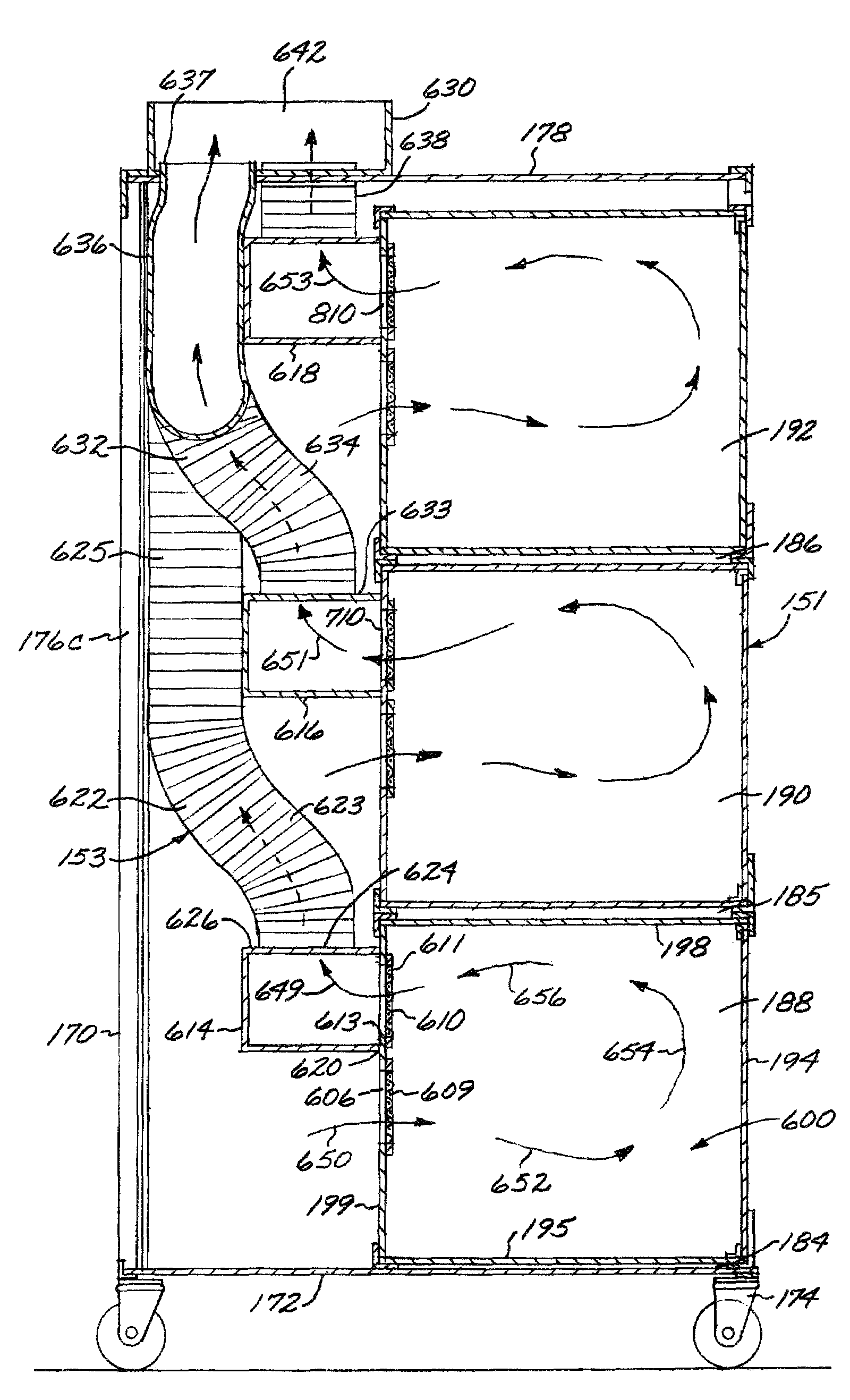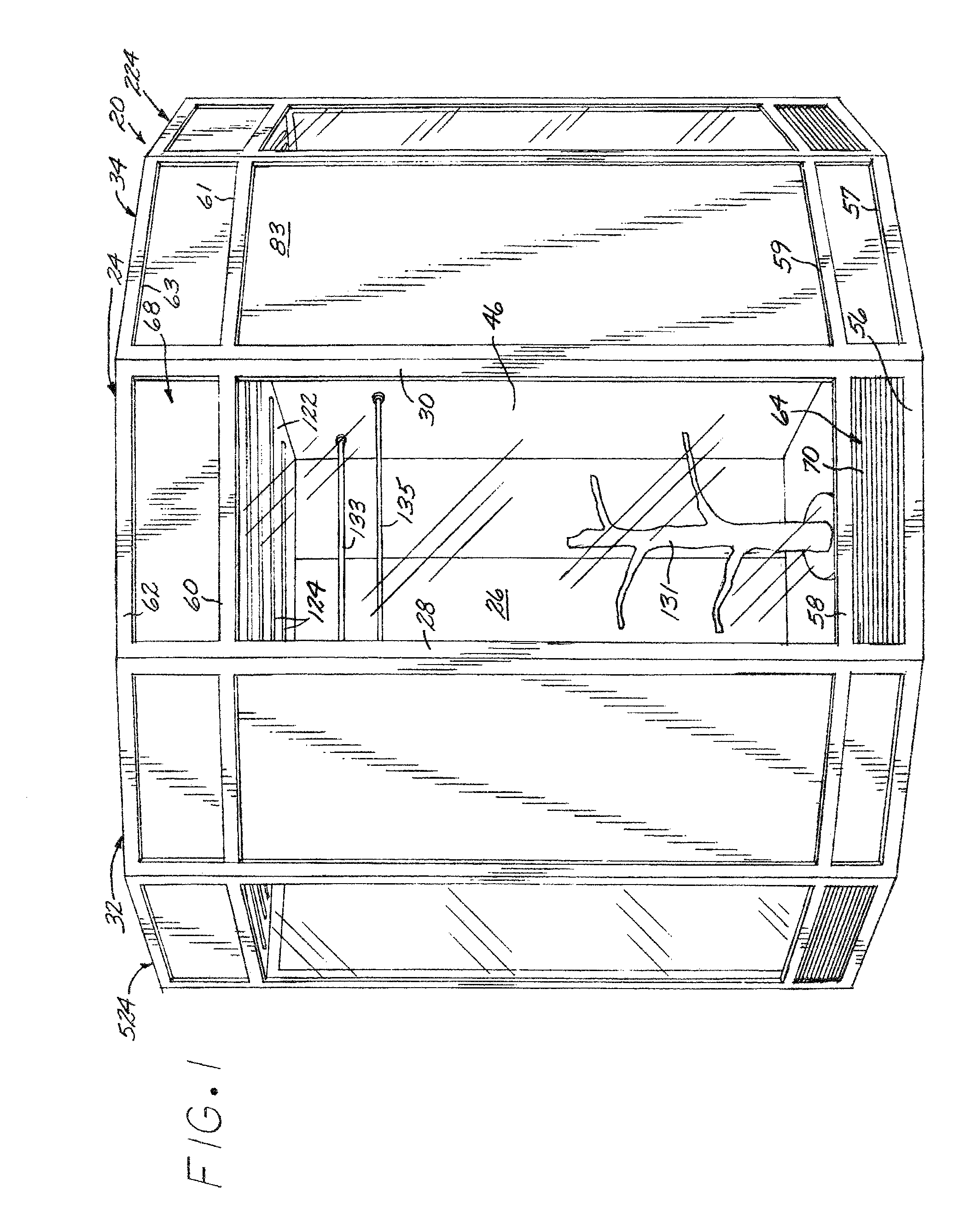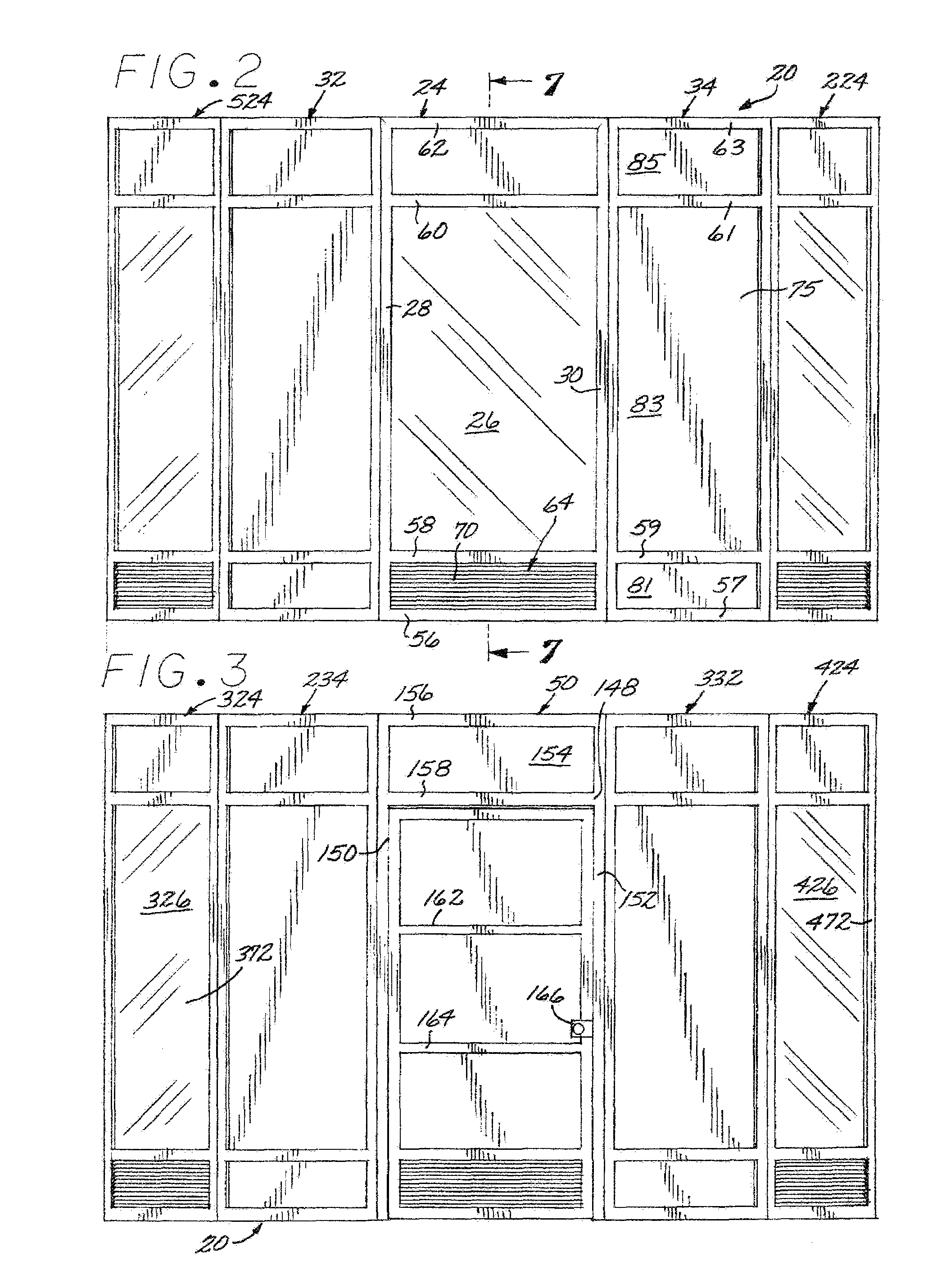Animal display and habitat assembly
a technology for animals and habitats, applied in the field of display devices, can solve the problems of difficult blending of health and marketing considerations into a satisfactory solution, bird exposure to ambient air, and inability to control allergens and dander
- Summary
- Abstract
- Description
- Claims
- Application Information
AI Technical Summary
Benefits of technology
Problems solved by technology
Method used
Image
Examples
Embodiment Construction
[0043]Referring now to FIGS. 1, 2, and 4, an animal display and habitat assembly, generally designated 20, may provide a convenient housing for a number of animals such as birds, reptiles, amphibians, and small mammals for display in a retail or wholesale setting. The animal display and habitat system generally includes a number of modular animal display units, generally designated 22, each having an outwardly facing frame 24 with a transparent viewing section 26 positioned between a first upright frame member 28 and an opposing second upright frame member 30 that are connected to a corresponding first transition member 32 and a corresponding second transition member 34, respectively. The first and second transition members further include inwardly projecting sections 36 and 38, respectively, that provide opposing door jambs 40 and 42, respectively, across which an access door 44 coupled to one of the door jambs may span such that the frame, transition members, and access door coope...
PUM
 Login to View More
Login to View More Abstract
Description
Claims
Application Information
 Login to View More
Login to View More - R&D
- Intellectual Property
- Life Sciences
- Materials
- Tech Scout
- Unparalleled Data Quality
- Higher Quality Content
- 60% Fewer Hallucinations
Browse by: Latest US Patents, China's latest patents, Technical Efficacy Thesaurus, Application Domain, Technology Topic, Popular Technical Reports.
© 2025 PatSnap. All rights reserved.Legal|Privacy policy|Modern Slavery Act Transparency Statement|Sitemap|About US| Contact US: help@patsnap.com



